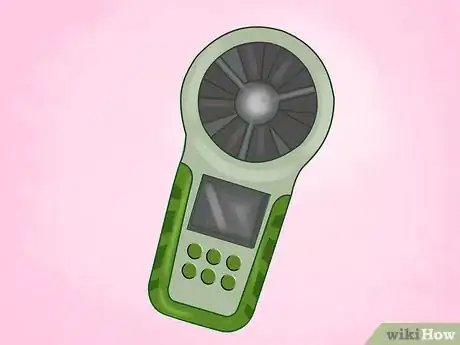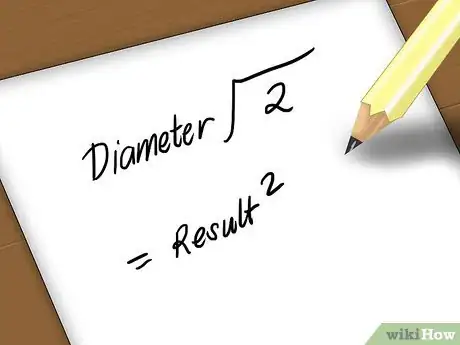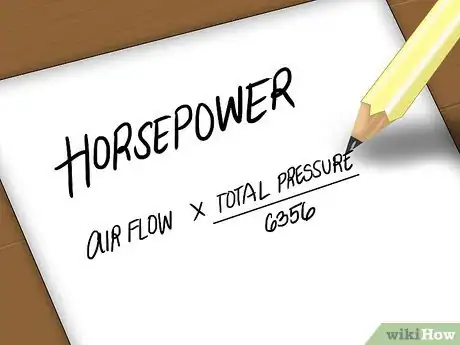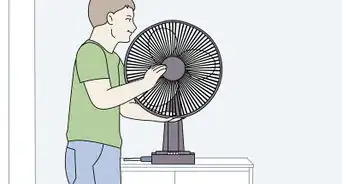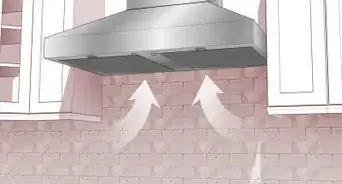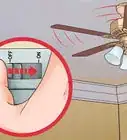wikiHow is a “wiki,” similar to Wikipedia, which means that many of our articles are co-written by multiple authors. To create this article, volunteer authors worked to edit and improve it over time.
This article has been viewed 54,493 times.
Learn more...
Being able to properly calculate fan power is important for many different applications, whether you are calculating the power of an industrial fan or a household fan. When calculating this, you will be able to determine the power that a fan requires theoretically, but you must be aware that the actual power that the fan requires (called brake horsepower) will always be greater than what you calculated simply because no fan can achieve perfect efficiency. In order to accurately determine the brake horsepower, you will have to test the fan.
Steps
-
1Understand what fan power involves. Fan power measures exactly how much energy a fan must receive in order to be able to produce a specific amount of air flow. Fan power is a function of both air pressure and air flow and units of horsepower is typically the measure used.
-
2Measure the air pressure. The very first thing you need to do is measure the fan’s total air pressure. This is measured in inches of water gauge (iwg). This is the unit of measure which is used for various fan calculations.[1]
- In order to calculate it, you must place one of the ends of a manometer where the fan inlet is. The other end of the manometer must be placed at the end of the fan outlet. Now you simply measure the difference between the liquid height on both sides of the manometer in order to measure the total pressure.
Advertisement -
3Measure the air speed. Now that you have the total pressure, you will have to measure the air speed in feet per second. For this you will need a vane anemometer.[2]
- Place the vane anemometer at different points of the fan face, in order to take more than one velocity measurement. After you have done that, average all of those readings in order to accurately measure air speed. The recommended amount of different velocity measurements is nine, according to the University of Connecticut.
-
4Measure the diameter. At this point, you must accurately measure the fan diameter in feet. When you have the diameter, divide it by 2 and square the result. After doing so, multiply it by 3.14 (or pi) in order to get the fan area.[3]
-
5Determine the air flow. Now that you know the fan area it is time to multiply it by the air speed of the fan. This will give you the air flow in CFM (or cubic feet per minute).[4]
-
6Determine the horsepower. In order to find the horsepower, multiply the air flow by the total pressure and divide the result by 6356.[5]
Community Q&A
-
QuestionWhy is the total pressure divided by 6356?
 HanCommunity AnswerWhen you multiply fan area (square ft), fan speed (ft/s) and fan pressure (iwg), your units come out to be ft^3*iwg/s. To convert this to horsepower, you need to divide by 6356.
HanCommunity AnswerWhen you multiply fan area (square ft), fan speed (ft/s) and fan pressure (iwg), your units come out to be ft^3*iwg/s. To convert this to horsepower, you need to divide by 6356.
References
- ↑ https://www.asi.k-state.edu/doc/dairy/fans-airflow-vs-static-pressure.pdf
- ↑ https://www.explainthatstuff.com/anemometers.html
- ↑ https://www.mathsisfun.com/geometry/circle-area.html
- ↑ https://nemionline.org/wp-content/uploads/2017/06/Air-Flow-Formulas.pdf
- ↑ https://nemionline.org/wp-content/uploads/2017/06/Air-Flow-Formulas.pdf


